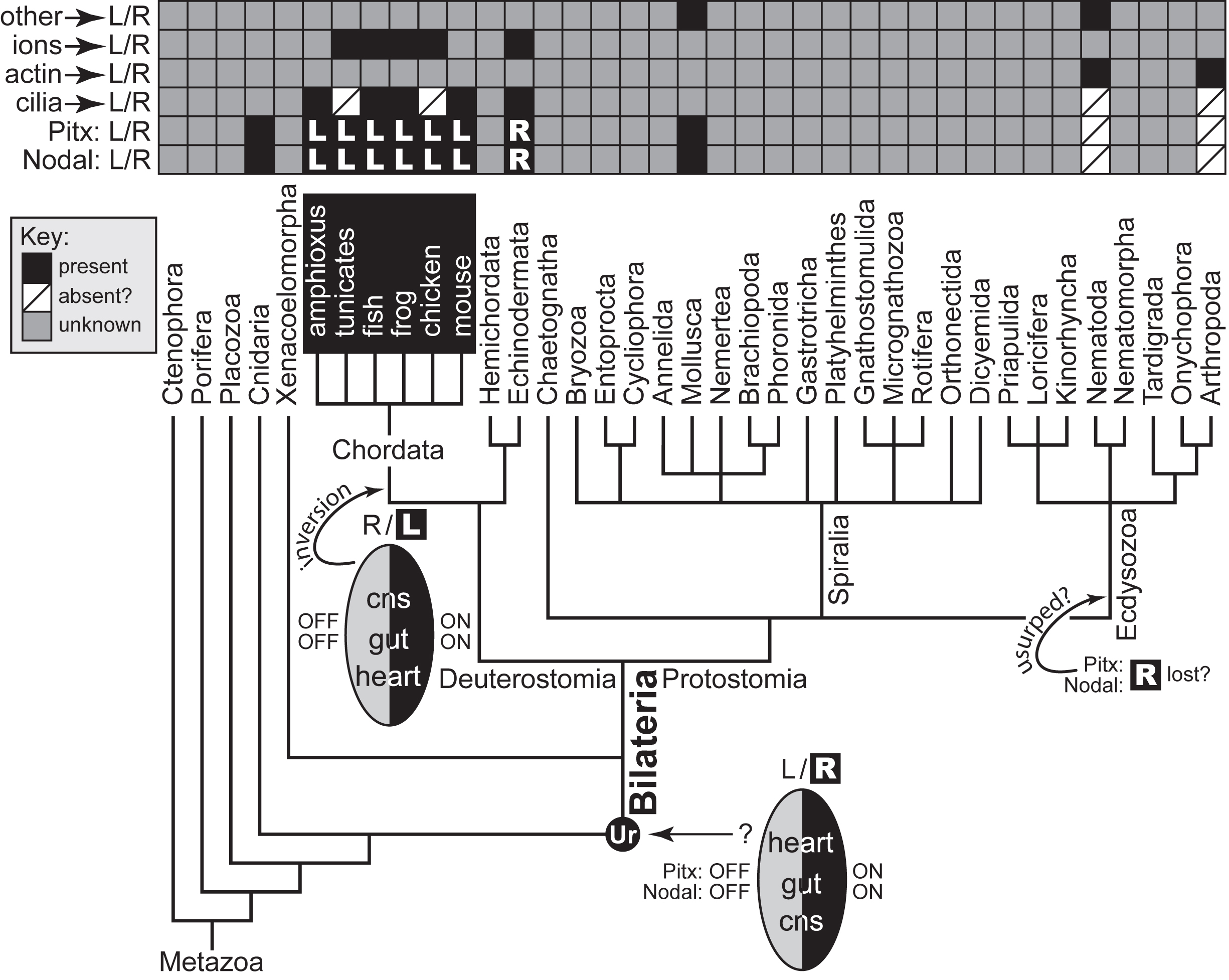

Deep Homology?
  |
Deep Homology? |
 Mechanisms of symmetry breakage along the L-R axis among animal phyla. Black squares signify usage of the indicated mechanism in at least some members of the phylum (or clade within Chordata). Slash marks denote its absence in all species examined thus far. Gray squares mean that conclusive facts are lacking (see key). Asymmetric expression of the morphogen Nodal and its effector Pitx (lowest two rows) occurs in deuterostomes and mollusks, as well as in Cnidaria along the mother-bud (≠ L-R) axis. Evidently, lateralized expression of Nodal and Pitx predated the Cnidarian-Bilaterian split but was later lost from Ecdysozoa when they split from Spiralia. Sinistral (L) expression of Nodal and Pitx in chordates is due to their D-V inversion, and dextral (R) expression of nodal in sea urchins is consistent with that notion. Hemichordates don’t use nodal along the L-R axis, but their polarity opposes chordates in mouth position. Flies and nematodes lack nodal homologs, and Pitx homologs are not expressed asymmetrically, so the "L/R" squares in both cases are marked "absent." Various tricks that have been implicated in the breaking of symmetry along the L-R axis are inventoried in the upper four rows of squares, where the arrow means "causes" and symmetry-breaking is denoted by "L/R." "Cilia→L/R" refers to cilia-propelled flow of a morphogen in the embryonic node. "Actin→L/R" means involvement of actin-myosin motors. "Ion→L/R" designates ion fluxes. "Other→L/R" is a catchall category that includes cytoplasmic determinants, microRNAs, intercellular junctions, extracellular-matrix components, and unknown factors. The ciliary device is thought to be a derived trait of vertebrates that was later lost in chickens and pigs, but there is no consensus as to which symmetry-breaking mechanism dates back to urbilaterians. |
|
Introduction: cover image Body axes: figure 2 | figure 3 | figure 4 | figure 5 | figure 6 Nervous system: figure 7 | figure 8 Vision: figure 9 | figure 10 | figure 11 | figure 12 | figure 13 Touch and hearing: figure 14 | figure 15 Smell and taste: figure 16 Limbs: figure 17 Epilogue: figure 18 The Interactive Fly resides on the web server of the Society for Developmental Biology. |